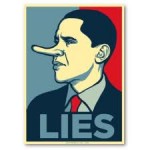The White House and the Debtocrats willfully mislead the American people when they constantly equate reaching the federal debt ceiling with default. This is pure, unadulterated fear mongering and it is simply not true.
The debt limit simply restricts the amount of debt that the U.S. Treasury may issue. The Executive branch and therefore the US Treasury has tools already in its power to prevent a default by prioritizing its payments to bondholders and by selling assets (like TARP funds, gold and Federal lands) to avoid a default.
The entire debt interest payments total $214 billion for 2011 – that’s less than 10 percent of $2.2 trillion in expected tax revenue this fiscal year.
The Obama Administration has chosen to play Chicken Little with retirees by spewing the threat that seniors may not receive their Social Security checks for August if a debt ceiling increase is not enacted. In point of fact, the Social Security program’s annual cost is $727 billion (33 percent of revenue). Medicare and Medicaid combined annual cost is $846 billion (38 percent of revenue). Satisfying interest on the debt and providing these major entitlements still leaves more than $400 billion in unspent tax revenue, plus $2.4 trillion in assets left over to cover remaining government obligations, including military pay and vendor payments.
The argument that America won’t be able to pay its bills without a debt-ceiling increase is simply incorrect.

Another White House fear touted by the Obama Administration is that not raising the debt ceiling will cause a downgrade of America’s AAA credit rating and spark a selloff of Treasury bills in international bond markets. In point of fact, at least two rating agencies (Egan Jones Ratings Co. and Dagong Global Credit Rating – have already lowered their assessments of U.S. debt, and interest rates have not moved.
Egan-Jones, a Nationally Recognized Statistical Rating Organization with the Securities and Exchange Commission, changed its rating of U.S. Government debt July 16, 2011 to AA-plus from AAA. It released a statement explaining its decision: “The major factor driving credit quality is the relatively high level of debt and the difficulty in significantly cutting spending. We are taking a negative action not based on the delay in raising the debt ceiling but rather our concern about the high level of debt to GDP.” In short, investors are more concerned about Washington’s spending problem than they are about the Treasury being able to issue more debt.
US voters are realizing what Washington hasn’t – that the debt crisis stems from a compulsive spending problem. A new Gallup poll indicates that, among Americans who follow the debt-ceiling debate “very closely,” 53 percent oppose increasing the limit; 37 percent favor an increase. A majority of Americans now seems to realize that fear-mongering is going on in Washington.
Raising the ceiling for the 11th time since the start of the new millennium tells investors that the U.S. Government is not serious about controlling its spending addiction. Instead, curbing the issuing of more debt and cutting spending will signal to bondholders that the government is finally trying to address the problem that created a debt crisis in the first place.
Prioritizing debt payments as they mature and selling assets are some measures that the US Treasury can take to avoid default.
The US Government must curb spending, or else the country will be in an even worse situation very soon.
Raising the debt ceiling is akin to an alcoholic having one last drink – sooner or later, the government needs to admit that it has a problem. Denial and the enabling of further unrestrained spending cannot change that reality.


